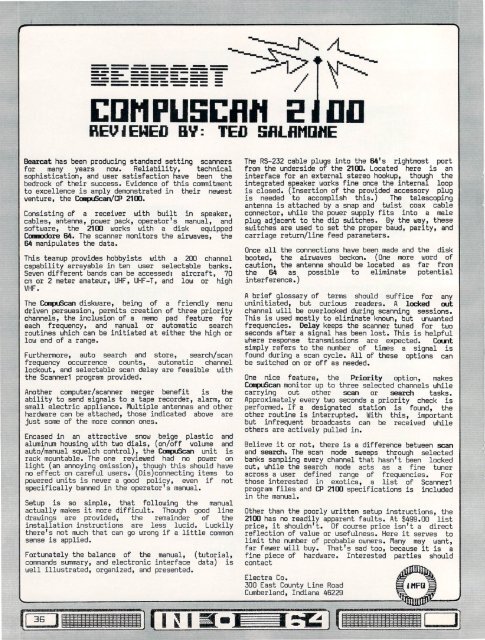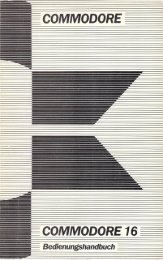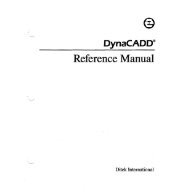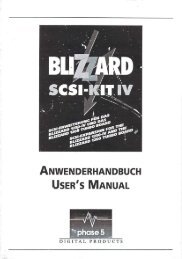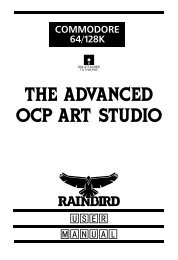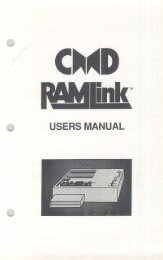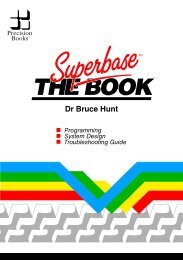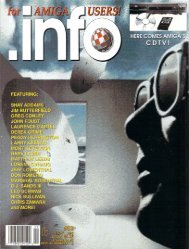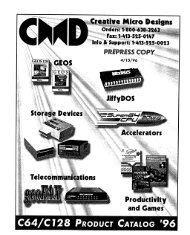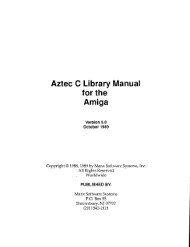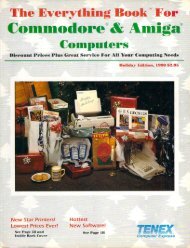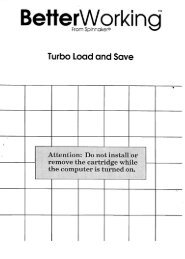You also want an ePaper? Increase the reach of your titles
YUMPU automatically turns print PDFs into web optimized ePapers that Google loves.
f<br />
EUMPUSEflfl<br />
REVIEWED BV: TED SflLflMQME<br />
Bearcat has been producing standard setting scanners<br />
for many years now. Reliability, technical<br />
sophistication, and user satisfaction have been the<br />
bedrock of their success. Evidence of this commitment<br />
to excellence is amply demonstrated in their newest<br />
venture, the CoapuScan/CP 2100.<br />
Consisting of a receiver with built in speaker,<br />
cables, antenna, power pack, operator's manual, and<br />
software, the 2100 works with a disk equipped<br />
Conmodore 64. The scanner monitors the airwaves, the<br />
64 manipulates the data.<br />
This teamup provides hobbyists with a 2QD channel<br />
capability arrayable in ten user selectable banks.<br />
Seven different bands can be accessed: aircraft, 70<br />
cm or 2 meter amateur, UHF, UHF-T, and low or high<br />
VHF.<br />
The CompuScan diskware, being of a friendly menu<br />
driven persuasion, permits creation of three priority<br />
channels, the inclusion of a memo pad feature for<br />
each frequency, and manual or automatic search<br />
routines which can be initiated at either the high or<br />
low end of a range.<br />
Furthermore, auto search and store, search/scan<br />
frequency occurrence counts, automatic channel<br />
lockout, and selectable scan delay are feasible with<br />
the Scanneri program provided.<br />
Another computer/scanner merger benefit is the<br />
ability to send signals to a tape recorder, alarm, or<br />
small electric appliance. Multiple antennas and other<br />
hardware can be attached, those indicated above are<br />
just some of the more common ones.<br />
Encased in an attractive snow beige plastic and<br />
aluminum housing with two dials, (on/off volume and<br />
auto/manual squelch control), the CompuScan unit is<br />
rack mountable. The one reviewed had no power on<br />
light (an annoying omission), though this should have<br />
no effect on careful users. (Dis)connecting items to<br />
powered units is never a good policy, even if not<br />
specifically banned in the operator's manual.<br />
Setup is so simple, that following the manual<br />
actually makes it more difficult. Though good line<br />
drawings are provided, the remainder of the<br />
installation instructions are less lucid. Luckily<br />
there's not much that can go wrong if a little common<br />
sense is applied.<br />
Fortunately the balance of the manual, (tutorial,<br />
commands summary, and electronic interface data) is<br />
well illustrated, <strong>org</strong>anized, and presented.<br />
The R5-232 cable plugs into the 64's rightmost port<br />
from the underside of the 2100. Located here is an<br />
interface for an external stereo hookup, though the<br />
integrated speaker works fine once the internal loop<br />
is closed. (Insertion of the provided accessory plug<br />
is needed to accomplish this.) The telescoping<br />
antenna is attached by a snap and twist coax cable<br />
connector, while the power supply fits into a male<br />
plug adjacent to the dip switches. By the way, these<br />
switches are used to set the proper baud, parity, and<br />
carriage return/line feed parameters.<br />
Dnce all the connections have been made and the disk<br />
booted, the airwaves beckon. (One more word of<br />
caution, the antenna should be located as far from<br />
the 64 as possible to eliminate potential<br />
interference.)<br />
A brief glossary of terms should suffice for any<br />
uninitiated, but curious readers. A locked out<br />
channel will be overlooked during scanning sessions.<br />
This is used mostly to eliminate known, but unwanted<br />
frequencies. Delay keeps the scanner tuned for turn<br />
seconds after a signal has been lost. This is helpful<br />
where response transmissions are expected. Count<br />
simply refers to the number of times a signal is<br />
found during a scan cycle. All of these options can<br />
be switched on or off as needed.<br />
One nice feature, the Priority option, makes<br />
ConpuScan monitor up to three selected channels while<br />
carrying out other scan or search tasks.<br />
Approximately every two seconds a priority check is<br />
performed. If a designated station is found, the<br />
other routine is interrupted. With this, important<br />
but infrequent broadcasts can be received while<br />
others are actively pulled in.<br />
Believe it or not, there is a difference between scan<br />
and search. The scan mode sweeps through selected<br />
banks sampling every channel that hasn't been lacked<br />
out, while the search mode acts as a fine tuner<br />
across a user defined range of frequencies. For<br />
those interested in exotica, a list of Scanneri<br />
program files and CP 2100 specifications is included<br />
in the manual.<br />
Other than the poorly written setup instructions, the<br />
2100 has no readily apparent faults. At $499.00 list<br />
price, it shouldn't. Of course price isn't a direct<br />
reflection of value or usefulness. Here it serves to<br />
limit the number of probable owners. Many may want,<br />
far fewer will buy. That's sad too, because it is a<br />
fine piece of hardware. Interested parties should<br />
contact<br />
Electra Co.<br />
300 East County Line Road<br />
Cumberland, Indiana 46229


